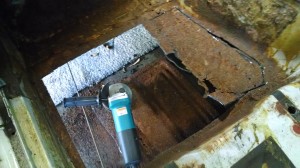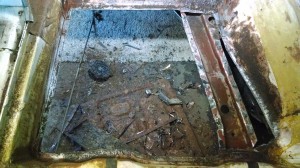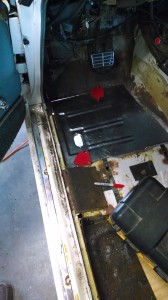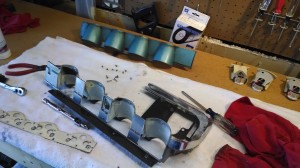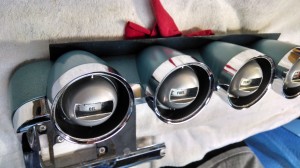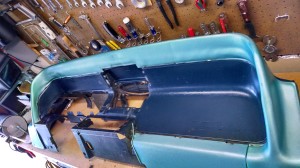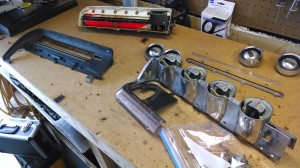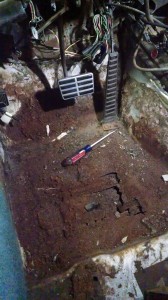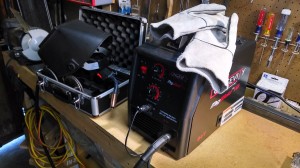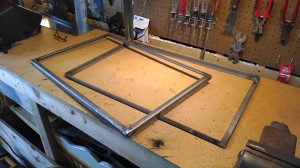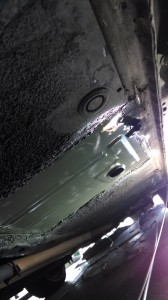
Last Sunday I spent the better part of the afternoon squatting in the car, welder in hand, sweating over the new floor pan. As it turns out, the replacement piece was cut perfectly–no adjustments were needed to the fit.
It took me quite a while to find just the right settings on the welder, and I did burn through in some areas, which was my greatest fear. With some experimentation, though, I found a technique to fix my mistakes. In the end, I had a solid, if not very pretty, seam weld around the entire perimeter. I used a light source underneath to help find and plug any gaps or holes in the welds, which felt like the right thing to do, even though the seams will be sealed as well.
I painted the the fresh metal with self-etching primer, which should help to inhibit future rusting. The seam sealer is on a truck somewhere, but when it arrives, I’ll be able to seal this side and lay down new sound insulation. There is a light at the end of this tunnel.
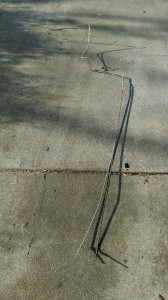
In the meantime, I tied up some loose ends by reinstalling the fuel line and replacing the old brake line that runs with it to the rear wheels. The new brake line was part of the stainless steel kit I purchased in 2012. The long piece snakes up behind the inner fender well where it is connected with a union, for some reason, to a shorter line that leads to the master cylinder. There was no urgency to replacing these lines, but it’s nice to have them on the car and not floating around the garage any more.
With those two lines in, I was able to put the inner fender well back on and reinstall the left front wheel. The car had been up on a jack for over a month–maybe longer–nice to see it down on four wheels again. Feels like progress.

